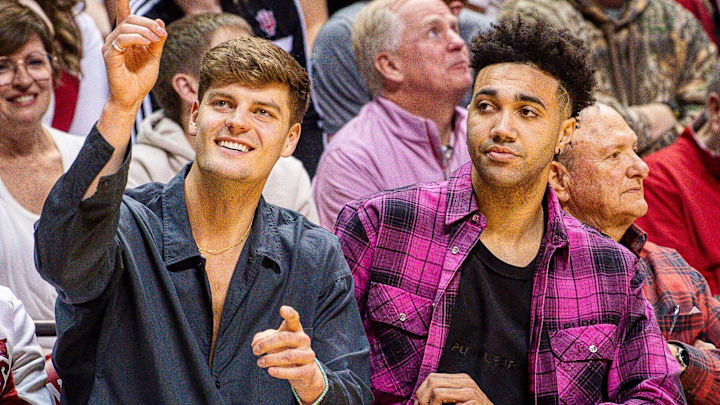Hoosiers fans know that this year’s men’s basketball squad includes many new faces — players who hadn’t played together before arriving in Bloomington.
That’s what happens when you lose Trayce Jackson-Davis, Jalen Hood-Schifino, Race Thompson and Miller Kopp from last season’s starting five — as well as transfers Tamar Bates (Missouri), Jordan Geronimo (Maryland), and Logan Duncomb (Xavier).
The days when college basketball players for the most part stayed at the same school until they graduated are gone.
That was the norm when players weren’t allowed to move to the professional ranks until they’d been out of high school for four years. (Current NBA rules say a player must be at least 19 years old during the calendar year of the NBA draft to be eligible for the draft — although there’s talk of lowering that standard to 18.)
And basketball players who transferred from one college to another used to be required to sit out one full season before they could play, which made transferring unattractive — especially for standout players.
But today it’s relatively painless to transfer (no requirement to sit out a season).
NIL rules allow college athletes to earn money while staying in college, which may delay some players from leaving school early for the NBA.
Player mobility ensures changing rosters
But even if athletes do stay in school longer, the ease of transferring makes it less likely they will stay at the same school. Turnover from one season to the next can be dramatic, as we’ve seen with the Hoosiers.
You can picture a high school phenom charting his course: I’ll start at IU, and if I like what’s happening, maybe I’ll stay a second year. But I’d also like to play at least one season at North Carolina, and it might be fun to head out west to Arizona or UCLA before I’m done with college basketball.
I'm not aware of anybody who’s done exactly that — yet.
But we have to ask ourselves: Is continuity a thing of the past in college sports? Will rosters turn over dramatically from one season to the next?
The answer is “yes,” and that means the coaches who succeed are the ones who can plug new players into the mix — quickly — every year. There won’t be much time for the new lineup to “gel” before the losses start adding up.
Good news: Change may be what you need
The good news is that we can be hopeful because if our favorite college team is falling apart, there’s always a decent chance that things will turn around next season.
